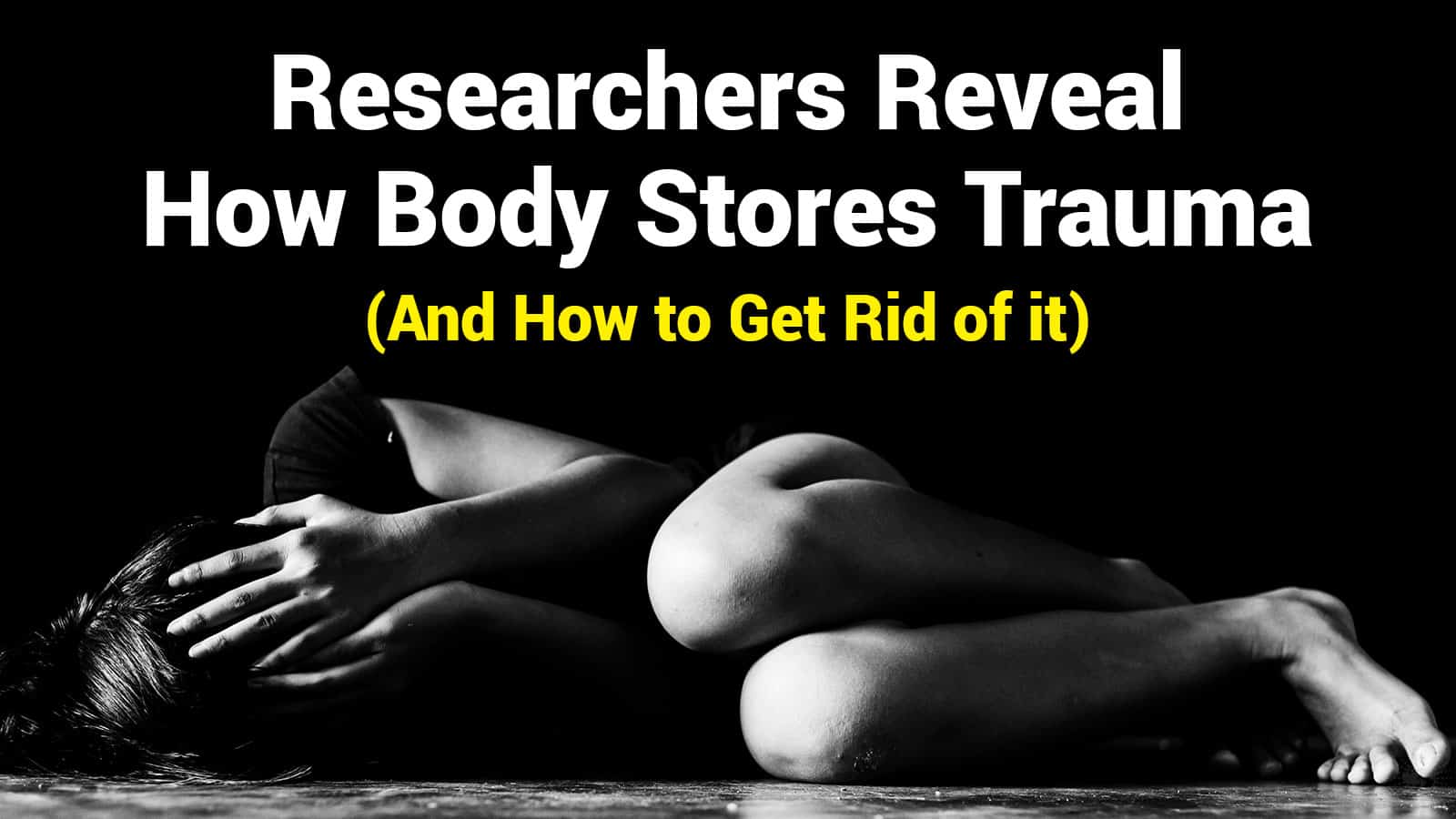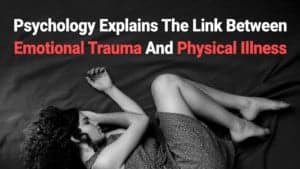Many of you reading these words have experienced trauma, to a greater or lesser degree, at some point in life. Statistics show, for example, that one in three couples have engaged in physical violence; one in four individuals grew up with an alcoholic parent, and one in five has been sexually molested.
It is a common and tragic misconception that past exposure to trauma somehow “goes away” with time. It doesn’t. If anything, our minds simply file trauma away to the subconscious. From there, it can–and often does–manifest in fleeting moments of discontent, impulsivity, and even physical pain.
In other words, this accumulation of trauma shows up in not only mental but physical, symptoms
The focus of this article will be the science of why and how the body stores trauma. First, let’s discuss the often overlooked intelligence of the body system.
The Intelligent Body and the Impact of Trauma
“When I was a student, we were still being taught that the human being comprised a number of different systems that could be understood separately…Now we know better. Each of these ‘systems’, as well as carrying out specific functions, is an information exchange, constantly talking to, and being informed and modified by,’ all of the others.” (Emphasis added) ~ Guy Claxton, Ph.D., “Intelligence in the Flesh” (Source)
In his book “Intelligence in the Flesh,” Dr. Guy Claxton discusses the intricate network of communication inherent to the body system. Claxton describes how every component, e.g., organs, muscles, etcetera, effectively exchanges information from anywhere within the body.
Our body learns responses, such as trauma
Moreover, our body is always learning. It is so because our mind is always doing the same, and the two are inseparable. Let’s take a look at the somatosensory phenomenon.
Somatization is defined as “a tendency to experience and communicate psychological distress in the form of [bodily] symptoms.” In other words, afflictions of the mental kind can, and often do, show up as a physical manifestation. In fact, research shows that mental health disorders strongly correlate to somatic symptoms.
For an example of somatization, look no further than the physical symptoms of anxiety and depression. Patients with depression and anxiety disorders often complain of the following symptoms:
- Chest pains
- Chronic fatigue
- Irritable bowel symptom (IBS)
This revelation is nothing new. Medical doctors have been well aware of the bodily effects of depression and anxiety for a long time. It just tends to be ignored, or worse, misdiagnosed.
Part of the reason is this profoundly ingrained, willful ignorance on behalf of the medical community that the body and mind are separate things. This dualistic view is especially prevalent in Western medicine. Thus, physicians in the west commonly treat mental and physical signs of illness as distinct, separate entities.
Let’s explore this mind and body communication.
How the Brain and Body Cope With Trauma
To understand how the brain, mind, and body communicate, it is helping to have an overview of the brain’s structure.
If you were to look at a 3-dimensional image of the brain, we’d see three systems.
First dimension
The first dimension (“outer layer”) is a large sensory area that runs from the back of the brain to the front. This finding is potentially significant, as sensory stimuli are numerous, yet communicate with a part of the brain, the frontal lobe, that is inclined to single-task and logic.
Second dimension
The second dimension (“middle layer”) essentially connects the right and left brain hemispheres. While certainly a critical function, we’ll mostly ignore it.
Third dimension
The third dimension (“core layer”) is the crucial one for our discussion. The last image would show the brain stem running vertically through the limbic system to the neocortex, the outermost brain region. The entire third dimension transmits information related to emotion and bodily sensations to the logical brain region.
But here’s where it gets fascinating.
The information travels back down. Here’s Claxton:
“…messages are sent in the reverse direction, back down the brain to the brain’s core, whence the information can affect what is going on in the recesses of the body…” In other words, cognitive processes directly impact the functioning of the body.
That brings us to reviewing the cumulative effects of traumatic stimuli on the body stemming from psychological responses.
How the Body “Stores” Trauma – and It’s Effects
“We’ve begun to understand how traumatic experience affects our innermost sensations and our relationship to our physical reality. The core of who we are. We have learned that trauma is not just an event that took place sometime in the past; it’s mainly an imprint left by that experience on mind, brain, and body – most of all, the body.” ~Bessel Van Der Kolk, M.D. (Source)
Basically, traumatic events reorganize the structure of the mind and brain that alters how we perceive people, things, and events. The effect is that, even when the traumatic event is over, the body continues to feel in a way that it did when the event first took place.
Soldiers who experience combat and who subsequently develop PTSD are a prime example of this process. PTSD is classified as an anxiety disorder. That’s partially because the condition results in a constant sense of tension in the muscles. Therefore, the patient experiences a sort-of “keyed up,” always-on bodily vigilance. For example, it’s common for combat veterans to become extremely frightened and even immobile upon hearing a loud, sudden noise.
In his book Resilience, former Navy Seal Eric Greitens shares with the readers his correspondence with a friend and fellow war vet who had difficulty adjusting following the end of his combat tour. According to Greitens, a sharp noise would sometimes cause to man to drop down and lie next to his vehicle for up to two hours.
His reaction and his body’s response to trauma had become ingrained via muscle memory. According to the Van Der Kolk, this sort of instantaneous communication and subsequent reaction demonstrates the intricate, unified functioning of the body/mind system.
The effects of trauma on the body are numerous.
Beyond the manifesting of physical symptoms such as nausea, pain, sweating, tension, trembling, and so on, trauma contributes to chronic diseases. According to Paul Schnurr, Ph.D., professor of psychiatry at Dartmouth College, trauma contributes to numerous illnesses, including heart disease and type 2 diabetes.
The physical effects of trauma also link to an increased risk of conditions such as chronic pain, chronic fatigue syndrome, fibromyalgia, and irritable bowel syndrome.
“There’s an increase [in the numbers of] just about every medical issue over time,” says Van Der Kolk about the bodily effects of trauma.
Healing The Body
“Neuroscience research shows that the only way we can change the way we feel is by becoming aware of our inner experience and learning to befriend what is going on inside ourselves.” ~Bessel Van Der Kolk, M.D.
When it comes to healing trauma, Dr. Van Der Kolk is clear. Stilling the mind and befriending the body is the best form of treatment. He noticed the lack of such interventions in the West. Thus, Van Der Kolk became instrumental in both reviving traditional mind/body practices and by developing his own.
For instance, Dr. Van Der Kolk and his team were first to receive a grant from the Institute of Mental Health (IMH) for the effects of yoga on PTSD. The team found that yoga had better results in a “very impaired” PTSD population than drug treatment has even had in any research study.
Van Der Kolk goes on to discuss how a 7-day Vipassana-style meditation retreat in a prison population produced outcomes in disturbed populations that were far more positive than any drug or legal intervention.
 Final Thoughts: The ADAA Agrees with Van Der Kolk
Final Thoughts: The ADAA Agrees with Van Der Kolk
Per the Anxiety and Depression Association of America (ADAA), the two main PTSD treatments are prescription medicine, psychotherapy (“talk therapy”), or a combination of the two. While Cognitive Behavioral Therapy (CBD) has shown to be useful for many, the outcomes of prescription medication in the treatment of PTSD have been, at best, questionable.
Meanwhile, plenty of evidence exists suggesting the effectiveness of meditation and yoga on trauma patients, including as a complementary therapy. In a meta-analysis of 10 randomized studies involving 643 participants, researchers note that “Meditation interventions – including mindfulness-based stress therapy, yoga, and [mantra] repetition” reduce PTSD symptoms “significantly” compared to prescription medication and other single treatment groups.
Van Der Kolk is currently treating PTSD and other trauma victims with what he calls a “structure.”
He otherwise calls this psychomotor therapy. This therapy forms the framework for the treatment, Pesso Boyden System Psychomotor or PBSP. It’s a body-mind model that uses body awareness and physical movement to counteract the body’s reaction to trauma recollection.













 Community
Community

